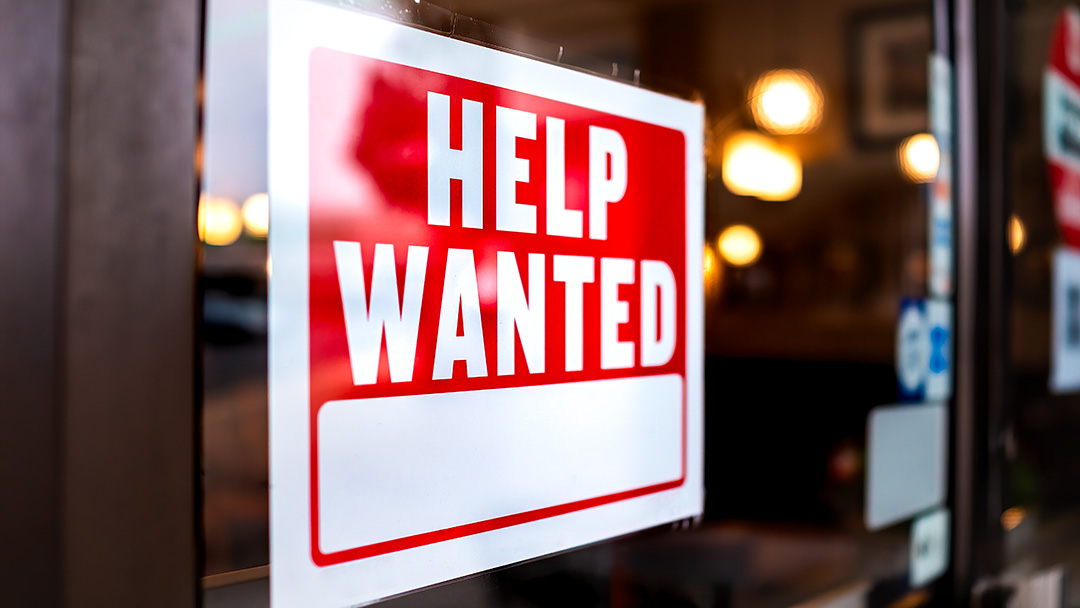
On average, 70% of guests don’t return to a restaurant. Even industry insiders like the Yumpingo team, who appreciate all the issues and hard work, might find themselves making a note to not return to a restaurant. Katie Yen, our US Sales Manager, investigates.
*******
“Experience is the teacher of fools,” says the oft-cited proverb and anyone reading a Google review before choosing a restaurant for a Friday night. In this digital age where you may be a few clicks away from viewing fifty or more restaurants in a two-mile radius, first impressions count. We all know this. Having a high overall rating, glowing customer reviews, great pics and a good location is like having four of a kind. Throw in a star chef and you’ve got yourself a royal flush. So why is it that despite our best efforts to pore through reviews (even those from professional food critics), scrutinize every menu and critique a restaurant's social media pics with a Gordon Ramsay-esque disdain, restaurants can still get it wrong? And why does it feel so painful?
I set out to answer these questions and share some stories along the way. First stop, an informal poll of the Yumpingo staff to hear about their poor dining experiences and whether any details had been shared with the restaurant directly or online and if they had gone back. Read on as we spill the tea on some of our most frustrating dining-out experiences.
The event that probably sticks most in my mind was a meal a few years ago. The server had offered us a table outdoors, which we gladly took despite the cold. It was late winter 2020 and we were still feeling cautious about being out at the time, especially with two kids, but thrilled for some semblance of normalcy after being cooped up indoors for weeks. Months!
There was a heat lamp above the table and a propane heater below so we settled in comfortably and ordered like the parenting pros we had become; in other words, everything at once cuz ready or not this ship was setting sail. Mac and cheese and a hamburger for the kids, moules-frites, vegetable risotto and butternut squash soup for the grownups.
And then we waited.
The kids got their meals and I got my soup. Which we enjoyed over a not-too-short period of time. My husband finished his wine and ordered a second. Plates were cleared. Our legs started to burn. The kids, as kids do, started to get antsy. Were they making the risotto from scratch? We had already summoned the server, food runner, anyone with a smidge of authority to inquire about our entrées and had been assured that they were coming.

Finally, when our mains were ready, our kids were losing it and we had to wave the white flag. We packed our uneaten entrées to go and paid the check. When the loud chorus of complaints and whines announced to our neighbors that we were home, I realized I had accidentally left a tip on top of the 22% service charge included in the bill. I resigned to eating my lukewarm but delicious risotto while the kids unwillingly put on their pyjamas. How had everything gone so wrong?
After beginning to work at Yumpingo I came to identify this experience as a “unique type of pain”, a phrase coined by one of our founders, which at its core highlights the many layers of disappointment compounded by how high the stakes are. The most obvious is the cost, followed closely by the time spent that you can’t get back, and lastly (most importantly?) the loss that is felt for the memory you hoped to create but now would just as soon forget. Loss aversion, which refers to an individual’s tendency to prefer avoiding losses to acquiring equivalent gains, felt with every layer.
Don’t be so hip you aren’t looking after people
Matt, our Director of Strategic Projects, was out one night with his girlfriend at a hip French restaurant they’d been wanting to try for ages. Immediately the vibe felt off between the farmhouse decor, bright lights and pulsating French hip-hop. But they settled in and waited for their server.
And waited.
Twenty minutes passed before someone greeted them, only to apologize and blame the wait on other staff. All with only ten tables in the whole place. They ordered, their food arrived, but no drinks. After a few requests, they finally got their beers 25 minutes later only to have to pour them into their own glasses.
“We were literally watching the bartender standing around, flirting with one of the customers instead of making a single drink,” Matt said. When it came time for desserts so much time had been wasted they had to order beignets to go.
The check arrived and the server made no motion to apologize or take care of anything on the bill. When it came to the tipping section of the check, Matt explained, “I looked at the tip options on the prompt screen: 22%, 24%, 30%. I couldn't believe it. I NEVER do this, but selected “other” and input 18%.” In this case, the food was so good that if even the service or the ambience had been better a return trip could have been justified, but unfortunately, Matt’s quest for a go-to French spot continues.
Has it come to this?
How can it be so obvious to guests that there is a problem and yet staff at the restaurant seem oblivious? Restaurant employees often deal with a cognitive bias called the ostrich effect, which describes how individuals (and systems) often avoid negative information, including feedback, which will help them improve their performance.
The fear behind this stems from a person’s deep-seated need to protect their own ego.
Experiencing contradictory beliefs can create tension resulting in anxiety until it can be resolved. Anyone who’s watched Kitchen Nightmares can feel how painfully obvious it is to everyone but the chef/ owner/ restaurateur that their food is horrible, they need a massive shift in their operations, or their entire staff is on the brink of a nervous breakdown.
When even complimentary vouchers can’t save the day
When one of our co-founders, Andy, ordered ice cream for his two kids (aged 7 and 4) after dinner out recently he was not prepared to wait 30 minutes for it. “There's a real skill to keeping them happy on a meal out and that is cadence. There's nothing worse than waiting for your dessert as a 4-year-old,” Andy told me. Despite asking for several updates and getting the manager involved he says, “We left with no understanding of what caused the issue or if it would be fixed if we came again. Despite [receiving a] comp, we're going to try other restaurants next time.”
When the online menu doesn’t match the IRL offer
 For Maria, one of our software engineers, the stakes were even higher because she was celebrating her sister’s birthday. With two specific dishes in mind, they had narrowed it down to a restaurant that had both listed online.
For Maria, one of our software engineers, the stakes were even higher because she was celebrating her sister’s birthday. With two specific dishes in mind, they had narrowed it down to a restaurant that had both listed online.
It turned out both items were no longer being served, which they found out only after they had arrived. “We were visibly disappointed, but didn’t want to leave,” Maria explained to me. “The dishes that we ended up ordering weren’t very good, even though the restaurant had a rating of 4.7 on Google.” And worse yet, despite leaving one dish unfinished and complaining to the server, they never got anything to brighten their mood. Needless to say, they haven’t been back.
Why is there no standard playbook for hospitality excellence?
The concept of hospitality for restaurants lacks a definitive how-to guide. Even if said guide existed, it would need to account for the diverse range of expectations held by each individual diner (not to mention the diversity in service type and style of the restaurant). Yet, it is perplexing that the burden of finding a resolution often falls to the guest, when it should rightfully rest upon the restaurant to proactively rectify the situation, even if they were unable to prevent the issue in the first place.
If anyone should be in charge of the planning around Yumpingo it’s Jess, our Head of Client Services, so it’s no surprise that when her family came into town she had everything mapped out.
First stop was a restaurant that had delivered amazing food in past visits. On this occasion, however, she had to show evidence of her booking request before even getting in the door, due to a host’s forgetfulness in putting their reservation down.
Thankfully they managed to be seated, but quickly noticed that prices had gone up and when the food came out realized portions had shrunk. “They had more than significantly reduced the portion size. The tempura vegetables which had previously spilt out of a bowl were now just 3 pieces of battered pepper/ carrots. The chicken skewers had gone down to only 2 (previously 4) and were ‘kiddy’ size.” Jess told me.
And the nail in the coffin? A dish they hadn’t ordered was dropped on the table and without noticing they took a few bites. It was then that a server came over, apologized that the runner had gotten the table wrong and took it straight over to the right table. Quelle horreur.
To complain or not to complain? That is the question.
Unsurprisingly in each of these situations, my colleagues and I didn’t feel it was worth the time to complain or leave a review, we just didn’t go back.
Without a word, we quietly joined the ranks of 70% of guests, on average, who simply don’t return to a restaurant.
And while I acknowledge, we may have higher expectations, given that we are in the business of feedback, many of us have worked in restaurants, giving us a healthy dose of compassion to balance it all out.
So what is a restaurant to do when the majority of their diners don’t leave reviews and may fall into that 70% camp? I’ve narrowed it down to four things that if done consistently will at least give you four of a kind. Add a star chef and you’ll definitely have a royal flush.
Be proactive
Consider implementing anonymized surveys to gather feedback from guests, enabling you to identify any potential red flags that may go unnoticed when it comes to food and service. Leverage technology such as Yumpingo to streamline the survey process and gain valuable insights that can help enhance your guests' experiences. By doing this, you can continuously improve and ensure a higher level of satisfaction among your patrons.
Resolve issues promptly
Empower staff to address guest concerns promptly and effectively. Keyword- empower. Encourage open lines of communication, actively listen to feedback, and take immediate action to address any issues or complaints that arise.
Maintain consistent quality control
Maintain consistent quality in food preparation, presentation, and taste. Regularly review and refine recipes, ensure freshness of ingredients, and implement quality control measures to minimize errors and disappointments.
Anticipate guest needs
Train staff to anticipate guest needs and be proactive in addressing them. This can include refilling water glasses, offering menu suggestions, providing accommodations for special occasions, or being attentive to any specific requests.
In other words, get it right the first time
One final note I'd like to add is that while the stories I've shared emphasize the frustrations caused by restaurants to diners, it's important to acknowledge that as diners, we also have the ability to create our own drama and exert influence over restaurants. Through our words and actions, we can impact a restaurant's overall reputation, influence others' dining choices, and determine whether we continue to patronize the establishment.
This topic is worthy of a separate blog post (or two!), but for now, it's wise to pause before posting a one-star review due to a new server's mistake or a brief wait for food. As the saying goes, "In the morning, a new day awaits, filled with endless possibilities and the chance to make it better than the day before."
****
So if you’re looking to improve your customer experience and future-proof your restaurant, get in touch with Yumpingo today, to see how we can help.
Share this:
Subscribe to our Newsletter
You May Also Like
These Related Stories

Maximize revenue this Christmas

How to Ensure and Sustain Restaurant Profitability
